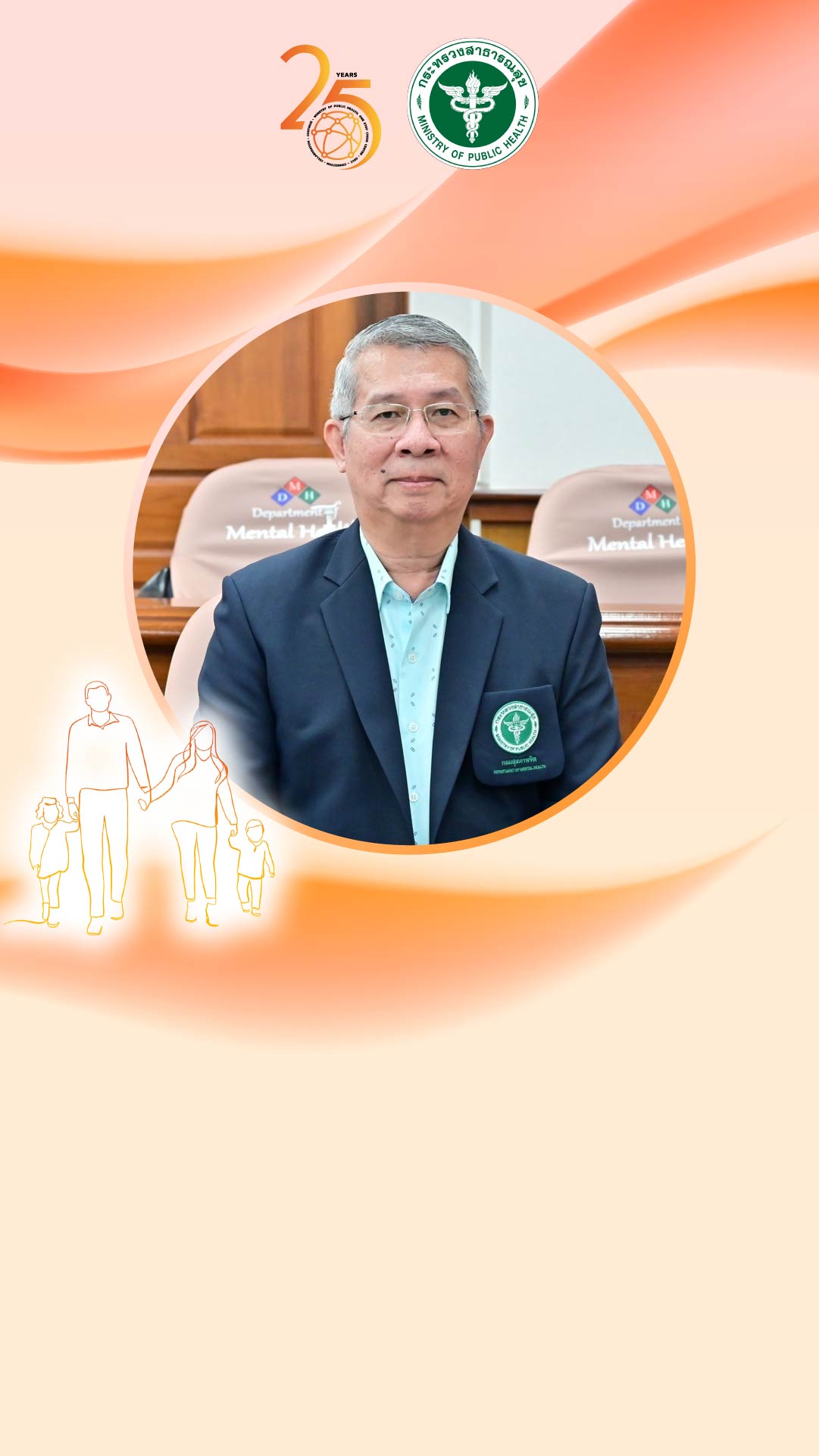นายแพทย์เทอดศักดิ์ เดชคง (Terdsak Detkong M.D.)
ตำแหน่งปัจจุบัน นายแพทย์ทรงคุณวุฒิ (ด้านเวชกรรม สาขาจิตเวช) ผู้อำนวยการสำนักวิชาการสุขภาพจิต กรมสุขภาพจิตหน่วยงานและสถานที่อยู่ที่ติดต่อ
สำนักวิชาการสุขภาพจิต กรมสุขภาพจิต กระทรวงสาธารณสุข
เลขที่ 88/23 หมู่ 4 ถนนติวานนท์ อำเภอเมือง จังหวัดนนทบุรี 11000
ประวัติการศึกษาต้องระบุสถาบันการศึกษา สาขาวิชาและปีที่จบการศึกษา
แพทยศาสตร์บัณฑิต จุฬาลงกรณ์มหาวิทยาลัย 2533
วุฒิบัตร จิตเวชศาสตร์ จุฬาลงกรณ์มหาวิทยาลัย จิตเวชศาสตร์ 2536
สาขาวิชาการที่มีความชำนาญพิเศษ (แตกต่างจากวุฒิการศึกษา) ระบุสาขาวิชาการ
Health Behavioral Change โดยเครื่องมือ MI [Motivational Interviewing]
Emotional Intelligence
ประสบการณ์ที่เกี่ยวข้องกับการบริหารงานวิจัยทั้งภายในและภายนอกประเทศ
- ผลของโปรแกรมการสนทนาแบบสร้างแรงจูงใจต่อการควบคุมระดับน้ำตาลในเลือดสำหรับผู้ป่วยเบาหวานชนิดที่ 2
- โลหิตสูงผลของโปรแกรมการสนทนาแบบสร้างแรงจูงใจต่อค่าซีสโตลิคและไดแอสโตลิคในผู้ป่วยความดัน
- ผลของโปรแกรมการสนทนาแบบสร้างแรงจูงใจต่อการลดค่าซีสโตลิคและน้ำตาลในเลือดสำหรับผู้ป่วยเบาหวานชนิดที่ 2
- ผลของโปรแกรมการสนทนาแบบสร้างแรงจูงใจต่อการควบคุมระดับน้ำตาลในเลือดสำหรับผู้ป่วยเบาหวานชนิดที่ 2 ปี 2563 ตีพิมพ์ในวารสารสถาบันบำราศนราดูร
- ผลของโปรแกรมการสนทนาแบบสร้างแรงจูงใจต่อค่าซีสโตลิคและไดแอสโตลิคในผู้ป่วยความดันโลหิตสูง 2563 ตีพิมพ์ในวารสารวิชาการกรมสนับสนุนบริการสุขภาพ
- ผลของโปรแกรมการสนทนาแบบสร้างแรงจูงใจต่อการลดค่าซีสโตลิคและน้ำตาลในเลือดสำหรับผู้ป่วยเบาหวานชนิดที่ 2
- การสนทนาสร้างแรงจูงใจเพื่อลดการดื่มในผู้ป่วยอุบัติเหตุที่มีการดื่มสุราร่วม
- การสนทนาสร้างแรงจูงใจเพื่อชะลอการเสื่อมของไตในผู้ป่วยโรคไตเรื้อรัง
- ผลการทดสอบคุณสมบัติของแบบประเมินพลังใจฉบับ 3 ข้อ
- ผลของหลักสูตรเสริมสร้างพลังใจอึด ฮึด สู้ ต่อพลังใจของผู้ได้รับผลกระทบในระหว่างสถานการณ์การแพร่ระบาดของโรคติดเชื้อไวรัสโคโรนา 2019
- ความสัมพันธ์ระหว่างแบบประเมินพลังใจ ฉบับ 3 ข้อ กับการคัดกรองความเสี่ยงปัญหาสุขภาพจิตตามกลุ่มวัย
Objective: To develop and assess the validity and reliability of the 3-item version of the resilience inventory.
Methods: Data from the rapid emergency response survey (sentinel surveillance) 2021 among 3,060 Thai aged 18 years and over was used. The psychometric properties of the 6-item version of the resilience inventory were reanalyzed using the t-test, item-total correlation, and Cronbach’s Alpha coefficient. The Pearson correlation coefficient and IOC method were used to select three items from three resilience domains (strength, strong, and struggle). The agreement between the 3-item and 6-item versions of the resilience inventory was then tested.
Results: The corrected item-total correlation of the 6-item version was between .873 - .918. There was a statistically significant difference (p = .01) between higher and lower total score groups for every item, with the inter-item correlation between .629 - .871. The total and subscale Cronbach's Alpha coefficients of the 6-item version were .950 and between .915 -.931, respectively. Three items (item 2, 3, and 6) were selected. Content validity was approved by 5 experts, and every question’s Item-Objective Congruence Index (IOC) was 0.6. The analysis results of 3,060 Thai found that yielding the total Cronbach's Alpha of .910 and the inter-item correlation between .767 - .777. The agreement of resilience domains between the 3-item and 6-item versions was between .960 - .966. The agreement of the resilience inventory was .985.
Conclusion: The 3 item resilience inventory showed adequate validity and reliability. The inventory can be used to evaluate resilience and prevent mental health problems among the Thai population.
Key words: resilience inventory three items, reliability, validity
Objective: To study the correlation between the resilience Inventory 3-item version and mental health problem screening tools by age groups.
Methods: Data from the Rapid Emergency Response Survey, and Sentinel Surveillance, using the Mental Health Check-In online program, conducted from 1st September to 31st October 2021, were used. The correlations between the resilience score and risks for stress, burnout, depression, and suicide in each age group were assessed by using the Pearson product-moment correlation. The optimal cut point for indicating the risk of mental health problems in each age group was estimated by considering the area under the ROC curve, sensitivity, specificity, the diagnostic odds ratio, and the Youden index.
Results: Of 8,337 subjects who completed the survey, 1,419 were in the youth group (13 - 19 years), 5,793 were in the working age group (20 - 59 years), and 1,125 were in the elderly group (60 - 80 years). The resilience scores of the elderly, working age, and youth groups were more in high level, moderate-to-high level, and low-to-moderate level, respectively. The resilience Inventory 3-item was negatively correlated with all mental health screening (r = -.372 to -.627). By considering the Youden Index for the youth, working age, and elderly groups, those with resilience scores below 21, 18, and 15 out of 30, respectively, were considered at risk for mental health problems.
Conclusion: The resilience inventory 3-item version can be used in conjunction with the screening of mental health problems to support the accuracy of results.
Key word: burn out, correlation, depression, resilience, stress, suicide
Corresponding author: Terdsak Detkong; e-mail: drterd@yahoo.com
